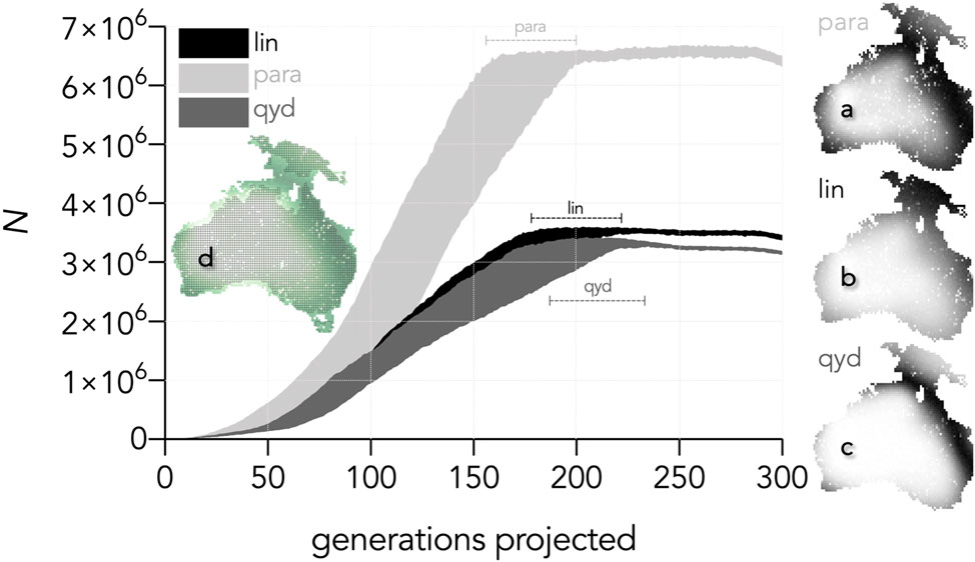
between human carrying capacity (K) and net primary production (Pp).
How and when people first settled Sahul – or the Pleistocene supercontinent of Australia, New Guinea and Tasmania that formed during times of low sea level – is a topic of major debate in the fields of archaeology and human evolution.
New research published today in Nature Communications by a multidisciplinary team led by Professor Corey Bradshaw at Flinders University, and involving UQ researchers, used state-of-the-art computer modelling and archaeological evidence to predict the timing and migration routes of early settlers entering Australia and New Guinea.
Co-author on the study and Associate Investigator in the Australian Research Council Centre of Excellence for Australian Biodiversity and Heritage (CABAH), Professor Chris Clarkson from The University of Queensland, said the simulation model explored multiple possible entry points along the northwest coast of Sahul (assuming sea crossings from island southeast Asia) as well as a range of possible entry times.
“The model found that the ancestors of Indigenous Australians and New Guineans could have settled the mega continent in as little as 5,000 years, with the population potentially growing to a staggering 6.5 million in that time, with an estimated 3 million in Australia alone,” Professor Clarkson said.
“Furthermore, contrary to popular expectations, the study found that people need not have followed the coastlines when moving through the region, but likely followed a well-watered inland route to move rapidly across the continent, pausing only briefly to enter the driest parts of central Australia.”
To generate these results, real-world data about long-distance dispersal of people, human survival, fertility rates and the chance of natural disasters were used. These were employed in combination with principles of human ecology and behaviour, and with anthropological, ecological and environmental data to model the peopling of Sahul.
The simulation model used data for the 10 million km2 super-continent and ran more than 120 scenarios to predict population size and growth rate.
Strongest support was found for the arrival of people either 50,000 or 75,000 years ago, with the average establishment rate of 1 km per year.

Professor Clarkson said models of this kind provide powerful predictions for where to look for archaeological sites alongside traditional owners in the future, and challenge prevailing notions of small past Indigenous populations or the routes people likely took to settle Australia and New Guinea.
Professor Clarkson leads archaeological investigations at the Indigenous site of Madjedbebe in Kakadu, which revealed Aboriginal Australians have been living there for at least 65,000 years.
Previous articles highlighting this research include Kakadu food scraps providing ancient rainfall clues and Kakadu find confirms earliest Australian occupation.
“It came as no surprise to me to see that our modelling results confirm that an early widespread occupation of Australia and that early Indigenous Australians thrived at this time,” he said.
“That is exactly what the archaeological evidence from Madjedbebe is also telling us.
“Afterall, we know that Indigenous Australians quickly developed remarkably successful adaptations to living in this rugged, and sometimes very difficult, country.”
The study was published in Nature Communications today alongside a second study exploring the migration routes people likely took in settling Australia.
To view the story published via CABAH please click here and for more information on the study watch the explainer video here.



